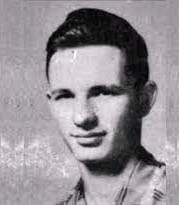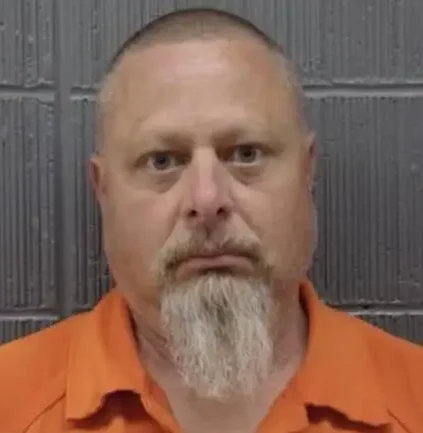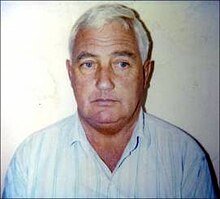
On March 1, 1989, in the suburb of Mosman, Australia where crime was almost non-existent, 82-year-old widow was living alone in a neat little apartment on the main street. It was midafternoon when she visited the local shopping center, and at 4 p.m. she walked the short distance towards her home unit. She got to the door and she was obviously attacked there. A couple of boys were visiting some relatives in the block of home units and they came out shortly after and found her lying on the concrete. There was blood around her head and her purse seemed to be open. They thought she had fallen over. Mrs. Mitchelhill died later that night in hospital. Police discovered a significant amount of cash was missing from her purse.


The victim’s panties and pantyhose were removed. There was no evidence of any sexual assault. One of the problems police had was the people wanted to help, thinking it was an accident and washed down the crime scene.
On May 9, 1989, 84-year-old widow of the English-Australian impressionist painter, Sir Will Ashton, Lady Winfreda Isabel Ashton (Hoggard) left the Club after enjoying some lunch. She walked to the shopping center before heading to her home. She entered the bin room to dispose of some junk mail. She was brutally attacked there, violently banging her head on the concrete floor. She had a red rain coat on and her legs were bare. Her pantyhose had been removed and had been used as a weapon, to strangle her. The ligature mark around her neck measured 9 cm. Her purse was open and beside the body. Her walking stick and shoes were placed, seemed to be quite neatly, at the foot of the body.
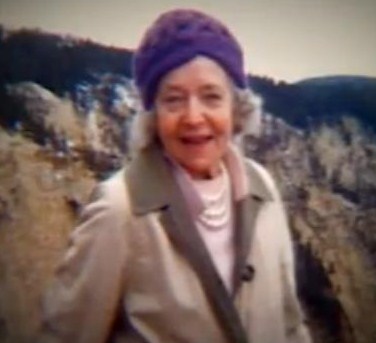
News of this second murder sends the media swarming to the area.
The juvenile theory was brought up basically because of the time of day and because of the close proximity to each of the murder scenes to high schools. The police investigative swept of the area, embracing members of the navy and army stationed in the Mosman area. Enormous resources were utilized in the police probe.
A month later a neighbor checked lady Ashton’s letter box and found her wallet inside. It was intact, minus some cash. Police later established the wallet had been found by a passerby.
The bodies were displayed in sexually degrading poses. The only distinctive difference was that the second woman was strangled and the first lady wasn’t strangled but there was excessive violence in both murders. Money was stolen out of the purse.
Rangers were doing their extra patrol. If they saw elderly females, they were to offer them assistance, either walked with them or gave them a ride home. Most of the elderly ladies at that stage wanted to be independent, so they didn’t go along with that.
Five months later, on October 18, 1989, 86-year-old widow, Doris Cox was walking outside her apartment. She was walking along the stairs when she was attacked. The murderer smashed her head into the brick wall. It was a particularly brutal attack. She survived and was taken to hospital with horrific injuries. Again, neighbors thought she had fallen over and they washed down the crime scene. Doctors became suspicious and called police. Detectives thought that they finally had an eyewitness, but the woman suffered from dementia.

Police decided to appeal to the public. They were looking for a young man. They even called the best psychiatrist to profile the perpetrator, but he also said that so much violence meant that the perpetrator was young.
78-year-old Dorothy Binky was walking down the main road and the man approached her. He seemed very nice and polite. This encounter with the perpetrator was only revealed much later in the investigation. Despite the publicity and warnings, she got him to carry the shopping bags and invited him into her unit for a cup of tea. He declined the cup of tea and decided that he didn’t want to murder her. Minutes after that encounter, he saw 85-year-old widow, Margaret Pahud. He followed her and brutally attacked her. On the ground he removed her underwear, her pantyhose and open her purse. Her shoes and walking stick were placed beside her body. That place was surrounded by many crowded places and nobody saw anything. When people found her, they placed her in an ambulance where she was pronounced dead. Thinking it was an accident, neighbors washed down the crime scene. It was Lane Cove, several kilometers away from first two murders.
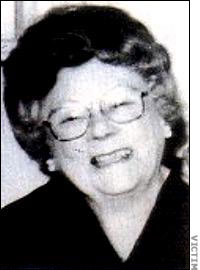
Media published that it was a “copycat killer”. Tabloids dubbed him “The granny killer”.
Forensic experts couldn’t identify the weapon. The pressure on the police was enormous. Pathologist Dr. Johan Duflou said: “In none of these cases were we able to provide anything but the very broadest impression of what the weapon was. The weapon was a blunt object. It had some weight, probably not an overwhelming amount of weight, so in other words, it wouldn’t weigh 10 kg or so possibly weighed a number of kilos, but we just couldn’t say more than that and it really frustrated us.”
Police set up an operations room at Lane Cove.
The new victim was 81-year-old Olive Cleveland. She was sitting on a bench just outside the Wesley Gardens Retirement Village, in the suburb of Belrose. He smashed her skull with a blunt weapon. He pulled up her dress and used her pantyhose to strangle her so tightly, that the material is embedded in her neck. He went through her handbag and placed it beside her, along with her shoes and walking stick. Police are called. They arrived to find another crime scene had been washed down.
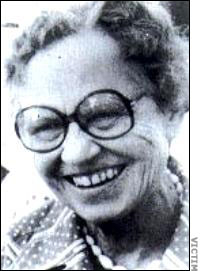
People became so afraid that when police were going to houses knocking on the door to get information and people didn’t want to open the door to police, saying ‘how do I know that you’re not a police officer? how do I know that you’re not dressed up as a police officer?’

As well as investigating the series of murders police also held community meetings to instruct elderly citizens on personal security. Some investigators worked up to 20 hours per day. Undercover officers posed as gardeners and workers.
93-year-old widow, Muriel Falconer lived alone. She was pretty independent and sharp for her age. On November 23, 1989, she went to the local shop. She managed to reach her front door, but there she was attacked. Neighbor entered her house, using a spare key. Her clothes were pulled up, her shoes beside her… Everything was the same. This crime scene was preserved.
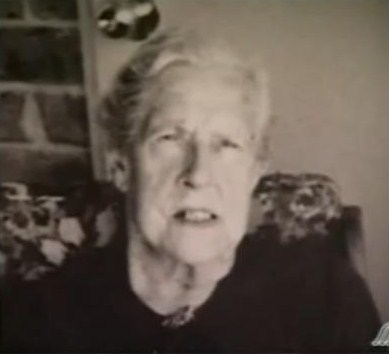
The perpetrator struck her in the head twice then he strangled her with pantyhose.

Detective sergeant Paul Tuxford, an old-fashioned investigator with an analytical mind, was reviewing all of the police running sheets for any angle or lead that might had been overlooked. He decided to speak with a neighbor who had found the last victim. It was unreported. She saw a middle-aged man, wearing a silver-colored suit in the area, on the afternoon of the murder. Sergeant Tuxford asked the task force computer expert to enter the words ‘gray-hair’ and ‘man’ against all the crime reports on the lower Northshore for the previous 6 months. A couple of minutes later, the report started coming out. There was six initially. That man assaulted women of about the same age as murder victims. There was an assault by a gray-hair man on 84-year-old Margaret Todd Hunter in Mosman a year earlier.

In July 1989, a man visited the Caroline Chisholm Nursing Home in Lane Cove, where he lifted the dress of an elderly patient and fondled her buttocks. In a neighboring room, he slid his hand down the front of another patient’s nightdress and stroked her breasts. The woman cried out for help and the perpetrator was briefly questioned by staff at the hospital before leaving.
On October 6, 1989, he pretended to be a doctor and ran his hand up the dress of Phyllis McNeil, a patient at the Wybenia Nursing Home in the lower North Shore suburb of Neutral Bay. He left when the blind McNeil called for help.
On 11 January, 1990, at Greenwich Hospital an elderly patient Daisy Roberts calls a nurse for assistance and said that the doctor had been in and he had put his hand under night gown and said ‘oh you’re losing your body heat’ and he had gone. The nurse said that it wasn’t right, because the doctor hadn’t been in today at all. It could have been left at that. Fortunately, it wasn’t. The Sister Pauline Davis telephoned Chatswood detectives to complain of an indecent assault. A young constable was sent to the hospital to investigate. A list of those who visited the hospital, included a gray-hair pie salesman, named John Wayne Glover. It was a local police and they didn’t investigate “The granny killer”.

They contacted John Wayne Glover, who turned out to be a representative of a meat pie company, and he declined to say anything to them and wanted to get legal advice. He agreed to meet with police the following day with a solicitor to be interviewed. He didn’t turn up for the appointed interview and the police contacted his home to be told by his wife that he had attempted suicide and, as a direct result of these outlandish allegations by the police. His wife told police that her husband had been rushed to the Royal NorthShore Hospital. He had taken a number of sleeping pills and washed them down with Whiskey. Doctors gave the police a suicide note. They made some inquiries and asked him if he if he wouldn’t mind being subject to a Polaroid photograph. That had nothing to do with “The granny killer”. Sister Davis at the Greenwich Hospital confirmed it was a picture of the man seen in the ward, so too the elderly victim. The Polaroid photograph and the suicide note were filed away when the investigating detective was required to complete a training course. Glover’s wife hired a solicitor. A couple of weeks passed before the young officer, who took the Polaroid photo, realized the significance of their inquiry.

They also discovered that Glover had become impotent, which detectives speculated could have led to the sexually degrading poses of the victims.

Glover was put under 24-hours surveillance in the hope that he would somehow reveal himself to be “The granny killer”. His car was fitted with a tracking device. He suspected police was following him. The surveillance revealed that Glover was a regular at the Mosman RSL Club, in the heart of Granny killer territory.
Background check revealed that Glover had been convicted of two counts of indecently assaulting women. Two counts of assault occasioning actual bodily harm and five counts of larceny, all committed when he lived in Melbourne from 1957 to 1965. Investigators checked nursing homes to see if anyone had seen a man acting inappropriately. At several, Glover was identified as having indecently assaulted elderly patients. In one of many nursing homes, a woman knew his name, because she was Gay Glover, his wife. Gay told her husband about police investigation.
On March 19, 1990, he took a day off, allegedly to hire a solicitor to fight ridiculous allegations, but instead he bought a bottle of Scotch and went to the house of a woman who knew him. Police took up positions around the entire house. As time was passing, they became anxious, because he was still inside the house. The house belonged to 60-year-old Joan Sinclair, a close friend of Glovers. Mrs. Sinclair owned a couple of dogs that were constantly barking. That provided detectives with an excuse to send uniform police around to ostensibly deal with a noise complaint without jeopardizing the surveillance. When there was no answer at the front door, the uniform police went to the back of the house. Police had actually entered the house where they saw a hammer on the floor and they saw what appeared to be a body. Four task force detectives arrived and took up their positions. They entered the house. They saw the male person’s clothing, trousers and a white shirt. They cleared each room and opened the bathroom door. They saw the body of John Glover in the bath. He was still breathing. In the bathroom there was evidence of the lethal cocktail of pills and alcohol he had consumed and a broken glass he had used in an effort to slit his wrists. Investigations revealed that Glover had arranged to take Joan Sinclair, his companion of 18 months, to lunch. Mrs. Sinclair had been murdered in a very similar way to all the other women. She sustained severe head injuries caused by a blunt object. She had been strangled with pantyhose. The hammer was near the body. The hammer was covered with toweling or other fabric and that dramatically changed the blood stain patterns.

Police informed his wife, Gay Glover. His solicitor went to the hospital to represent Glover. Glover made it clear to his solicitor that he himself had wanted to make a statement as to those murders and was very persistent that he had wanted to get it off his chest. He described in detail his crimes. Detectives said that he was talking about it as if he had been talking about making a cup of tea. In his home detectives found a pair of shoes and one fitted the bloody shoe print left by the killer of 93-year-old, Muriel Falconer. That was the first piece of physical evidence to definitively tie Glover to the murder of one of the women.
Later that night Glover was formally charged with one count of murder, that of Mrs. Joan Sinclair. He was in custody. Authorities still had one major hurdle to overcome. He confessed to the murders but there was still much for police and prosecutors to do. They had to ensure they had taken account of possible claims of temporary insanity.

He was telling his family that police couldn’t catch the madman and that they were idiots. His family was shattered.
Police delved into Glover’s background to find out what motivated his desire to murder old women. Glover came from a working-class family in Wolverhampton in the UK.

His mother, Freda, had several husbands and many boyfriends.


In 1957 he migrated to Australia, living in Melbourne, where he was convicted of several indecent assaults.

Essie thought he was marrying above his station and he knew full well that she didn’t like him. When the Glovers moved into her Mosman house the bitter feelings between Essie and Glover intensified. His own mother and his mother-in-law at that particular time or prior to that, were both over 80 years of age, and both of them had died of natural causes, within several months prior to him commencing murders.
On March 28, 1990, John Wayne Glover, 57, salesman of Mosman appeared, under heavy guard, at Court where he was charged with six murders and a string of assaults. Although he had already admitted to the crimes, Glover pleaded not guilty. His defense was temporary insanity or diminished responsibility.
Crown prosecutor, Wendy Robinson Q.C., someone who prosecuted many prominent criminals, but nothing of that magnitude. She stated: “The main pressure was that many people had remarked to me, including people who I thought were sufficiently educated, to perhaps know a little better, that if you go out and hit little old ladies over the head with hammers, which is how this were generally characterized in in the public, that you must be mad.”
On November 18, 1991, the trial began. The defense put up two psychiatric experts who gave evidence that they had believed a deep seeded hatred of his mother and mother-in-law drove Glover to commit the murders, and that he was insane at the time. But police gave evidence that Glover made meticulous preparations for each of the killings. On each occasion he carried the hammer in his car. He invariably returned home, burned the gardening gloves hat he had used in the attack and he washed the hammer with hydrochloric acid.
Dr. Rod Milton’s evidence was crucial in rebutting Glover’s defense of temporary insanity, that Glover was bad not mad: “By saying, well, how could there be a division between good and bad, if this person could be so self-serving, as to wash the hammer to remove traces of blood, and at what point did the good person come in? Was the good person the one who washed the hammer or was it the bad one? And I think by reducing this whole issue to the absurd, I think that probably made it clear to the jury, that there really wasn’t much in that kind of defense.” It was the only time Glover expressed anger.
Glover made a statement, pleading to the jury that he was full of remorse for his ugly deeds, as he was pretending to cry, he told: “I’m sorry. What more can I say?”

The jury only deliberated for a couple of hours before the foreman declared him guilty on each of the charges. John Wayne Glover was convicted and sentenced to life in prison.
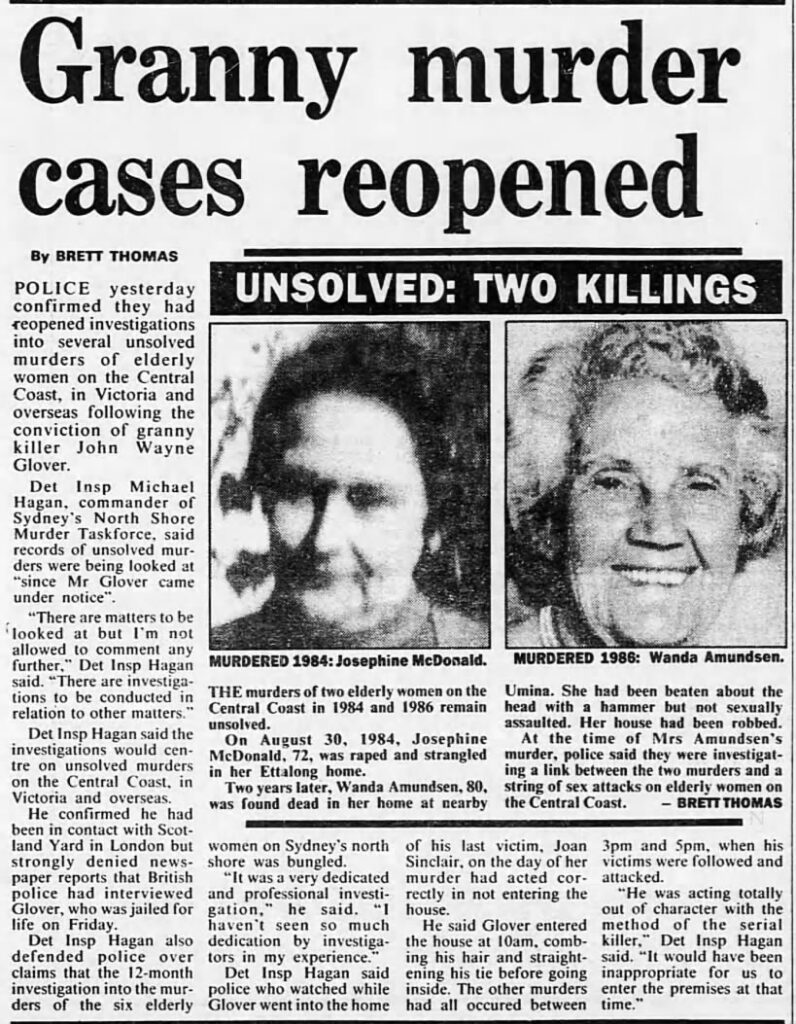

Detective Chief inspector, Dennis O’Toole were visiting him, hoping he would tell him for more murders. Glover gave him a sketch. He drew a building and pine trees. He tried to find answers. There was a number 9 on the drawing. Still, the truth was buried.

Although, John Wayne Glover was not diagnosed, there were evident signs that were also present in Dennis Rader’s, aka “BTK” sentencing statement. “He was talking about it as if he had been talking about making a cup of tea,” detective noticed. Or Diane Downs about attack. That is one of the key symptoms of psychopathy – shallow emotions. He enjoyed watching news and commenting the case, by calling detectives idiots. He really felt that he was above them and they could not catch him. That would be one more key symptom of psychopathy – grandiose and egocentric. He obviously did not feel any remorse or guilt and that is one more key symptom. His crimes progressed over time. We know that he was breaking the law as a young man, but we do not know anything about his childhood. So, here there is a key symptom of psychopathy – adult antisocial behavior. He was able to manipulate people around him. That is also a key symptom of psychopathy – deceitful and manipulative. He would be diagnosed with psychopathy. What about his sexual attraction to elderly women? In psychoanalytic theory there is Oedipus complex, but today we have paraphilias and he had a paraphilic disorder, gerontophilia. Gerontophilia is the primary sexual attraction to the elderly. He exhibited sadism in punishing women. Whether he was punishing them because he enjoyed inflicting pain or he was punishing them for being impotent or punishing elderly women in his life, we don’t know. He would, also, most likely, be diagnosed with some other disorder or personality disorder.
